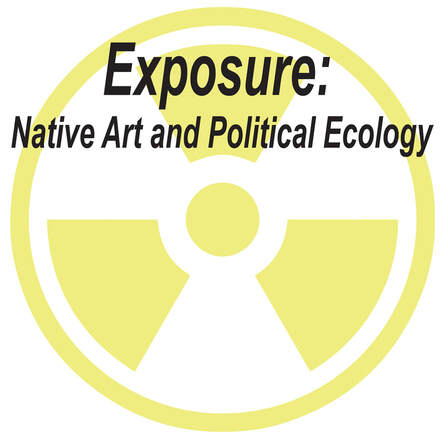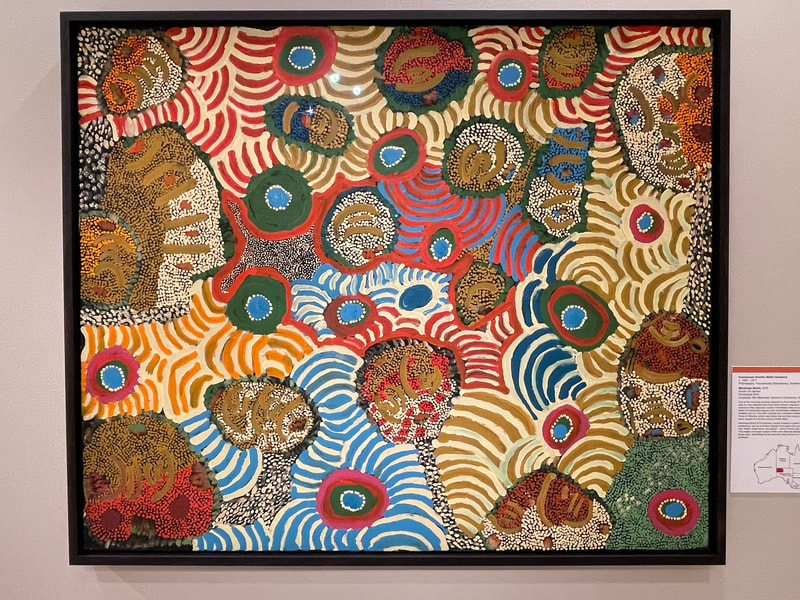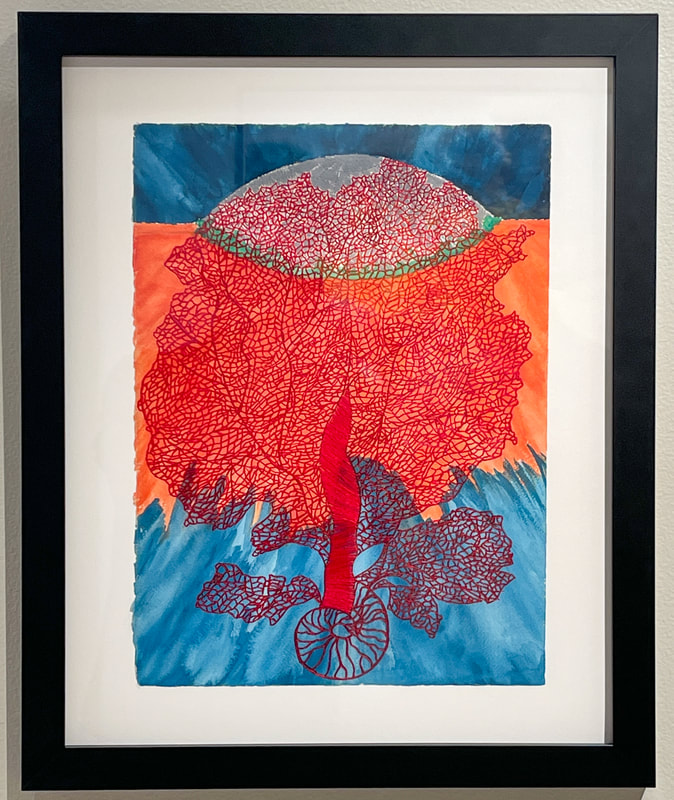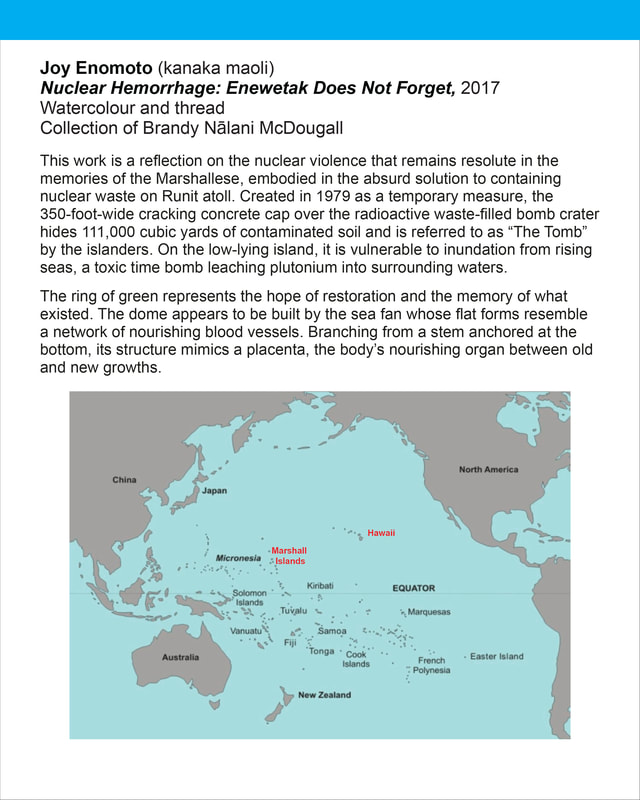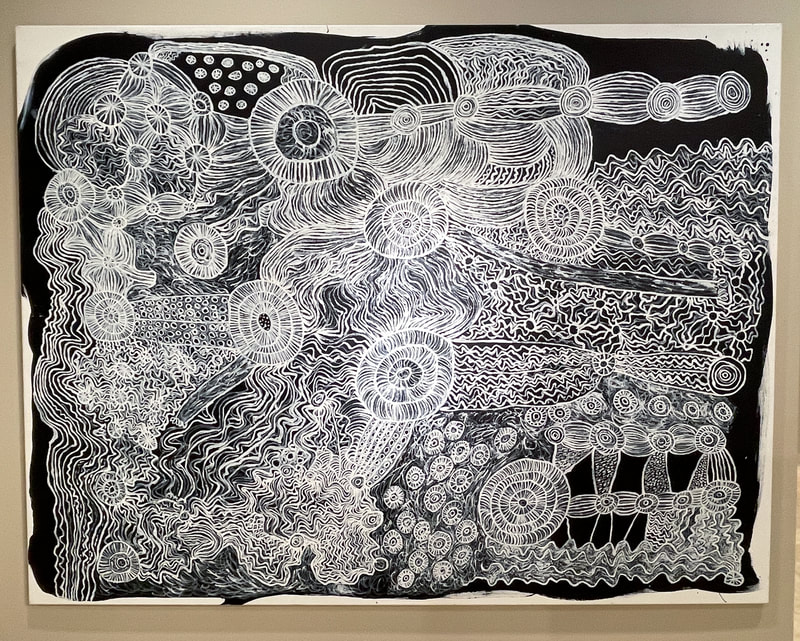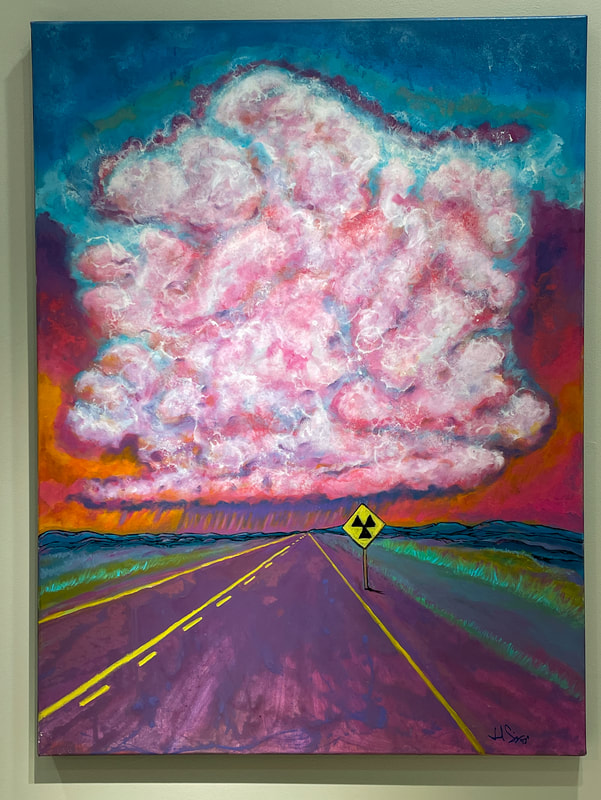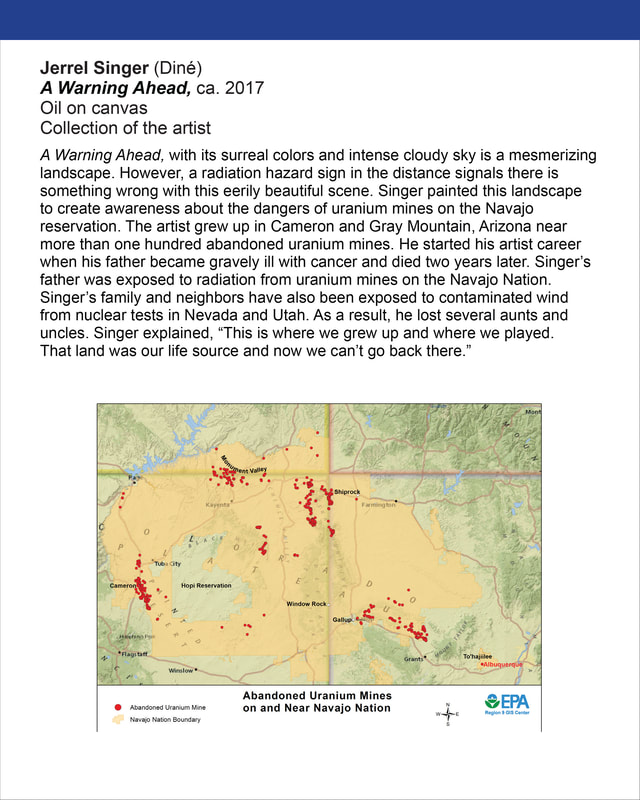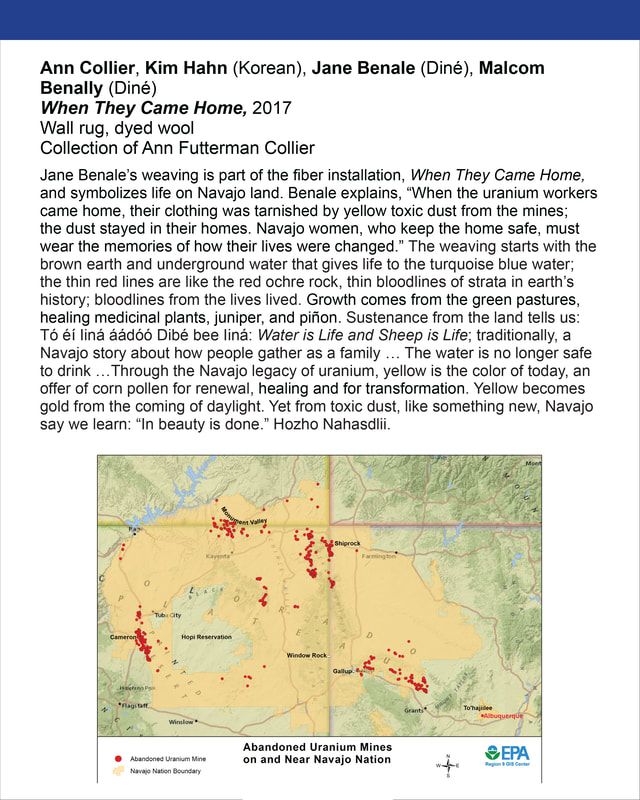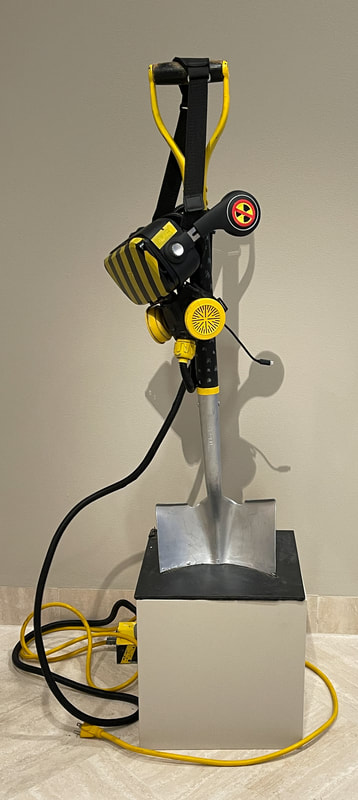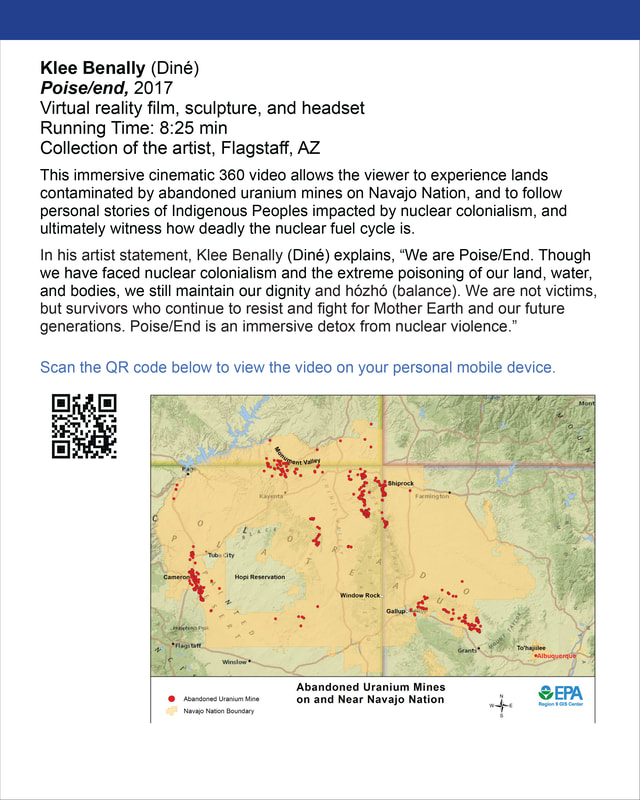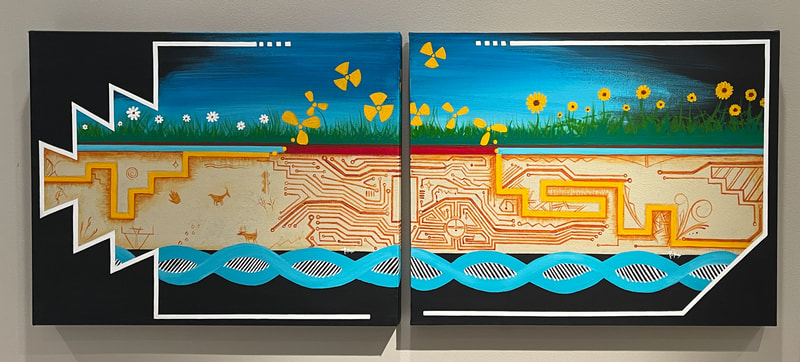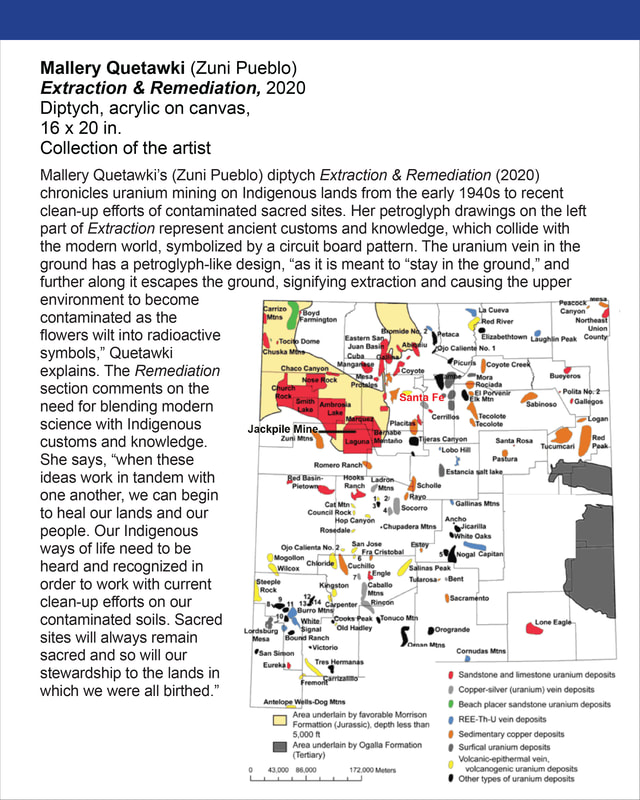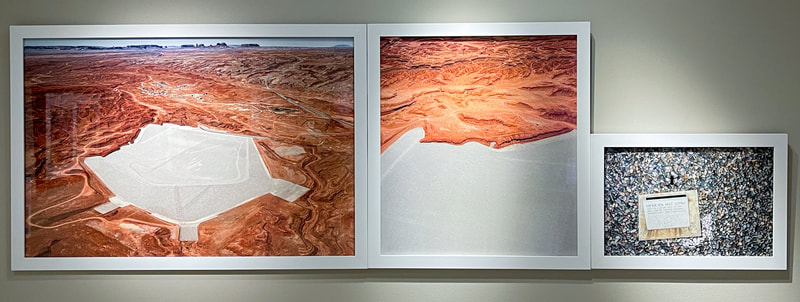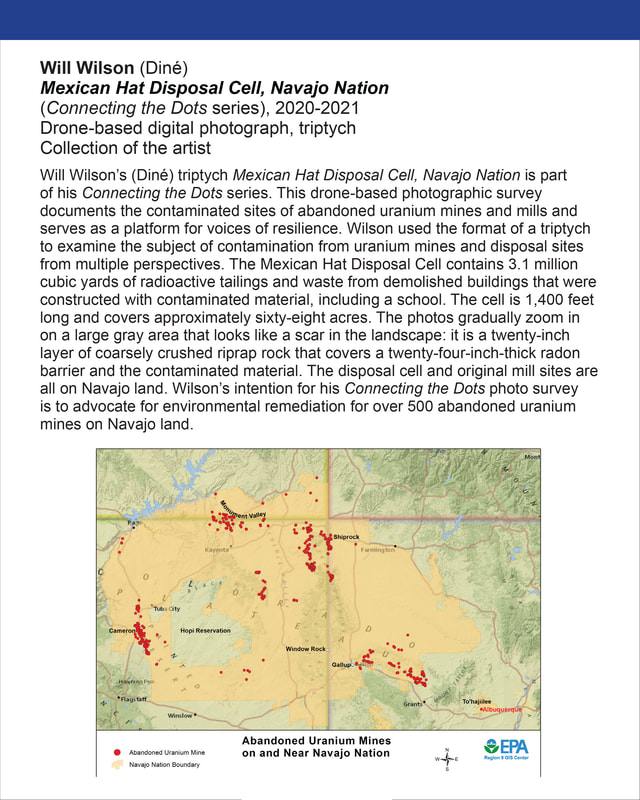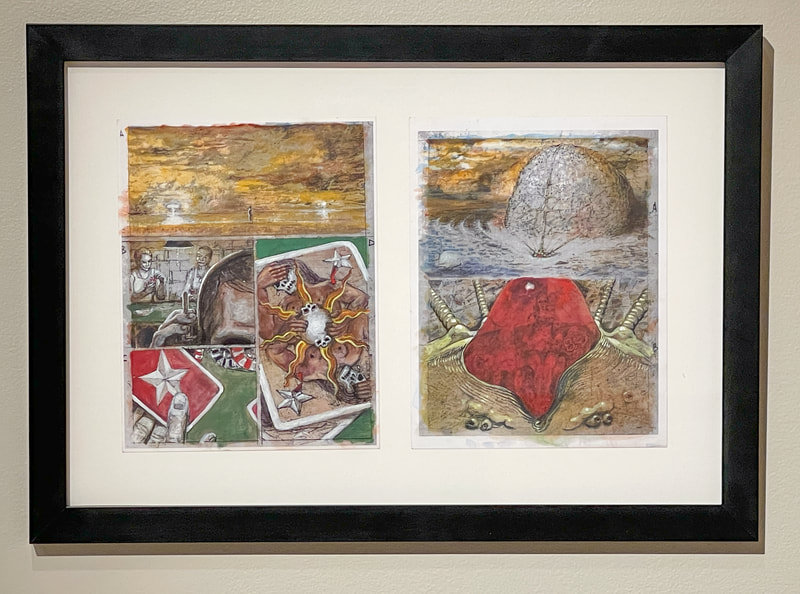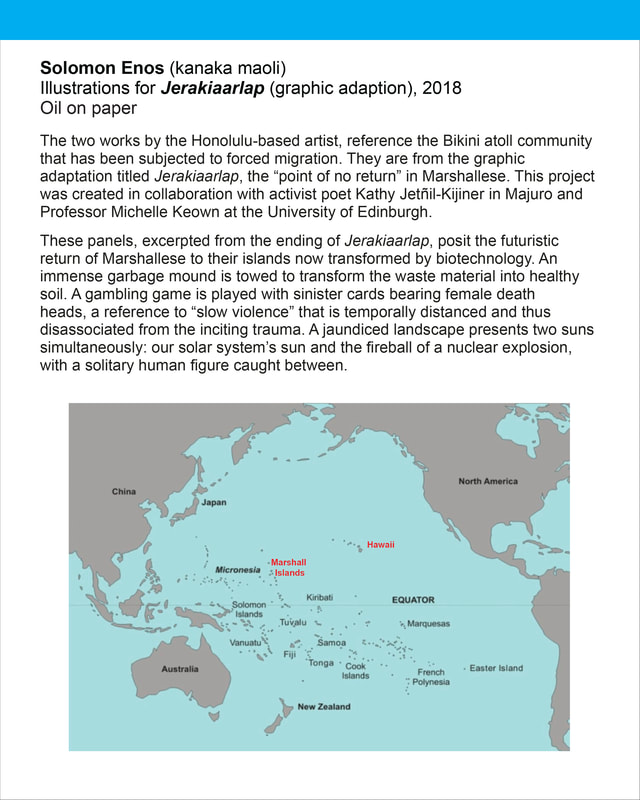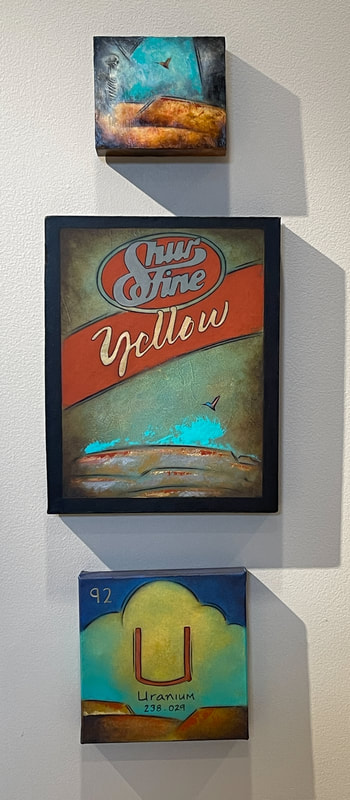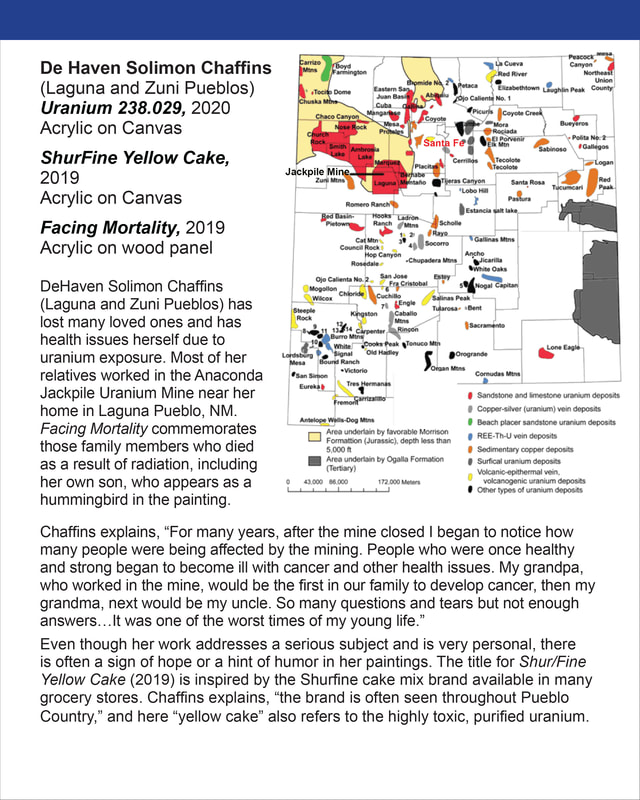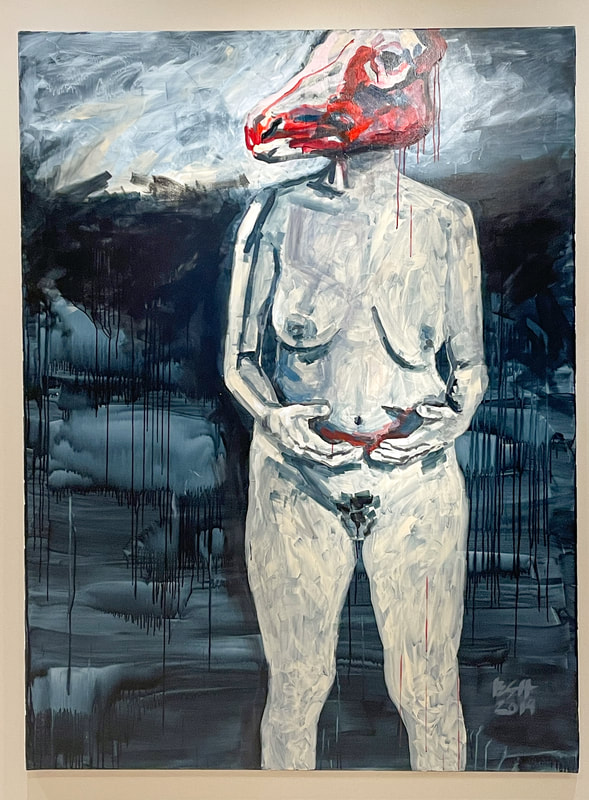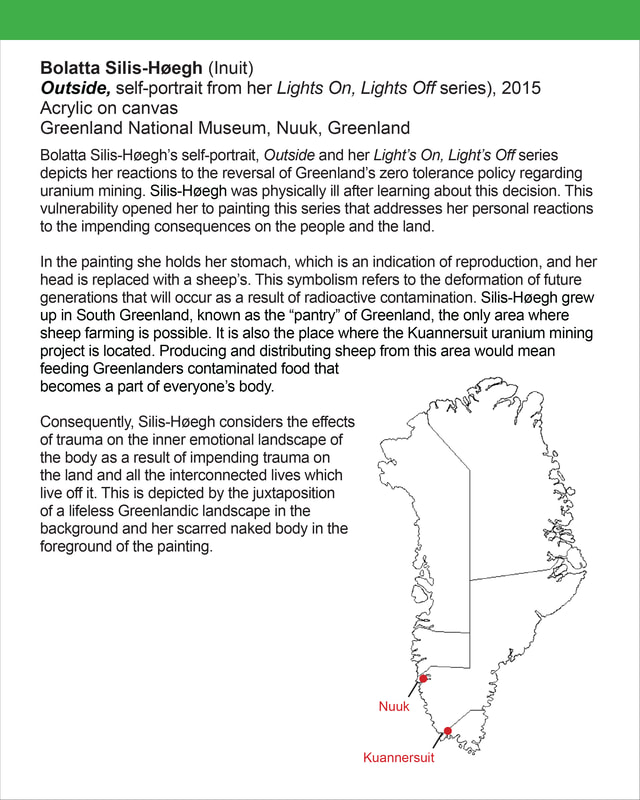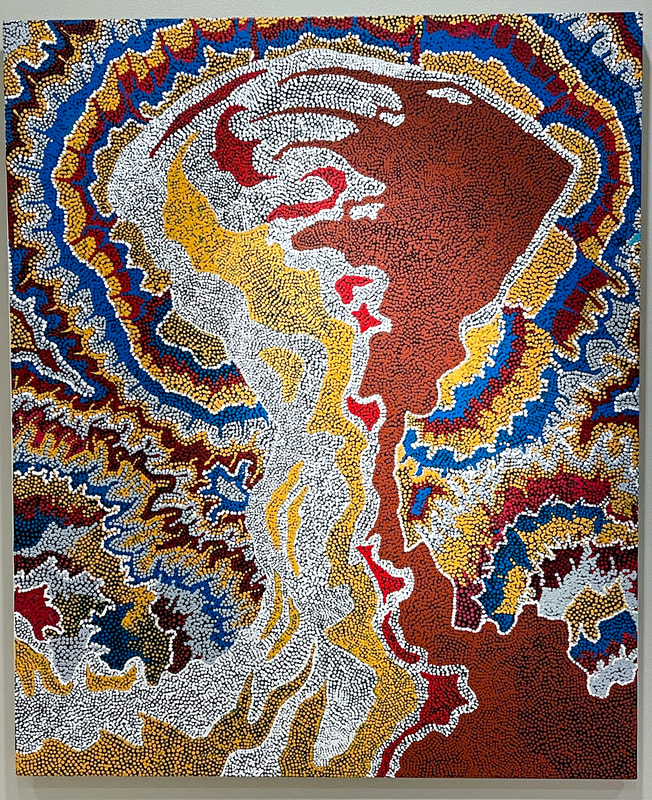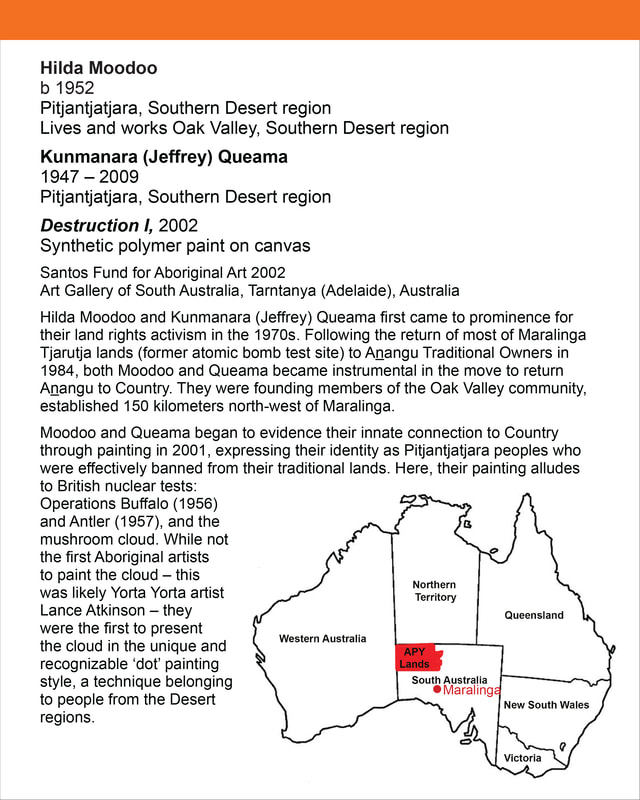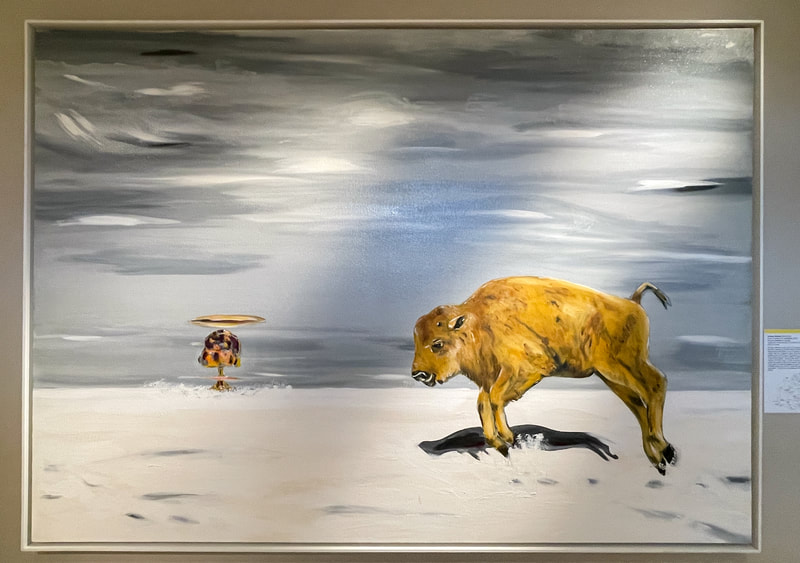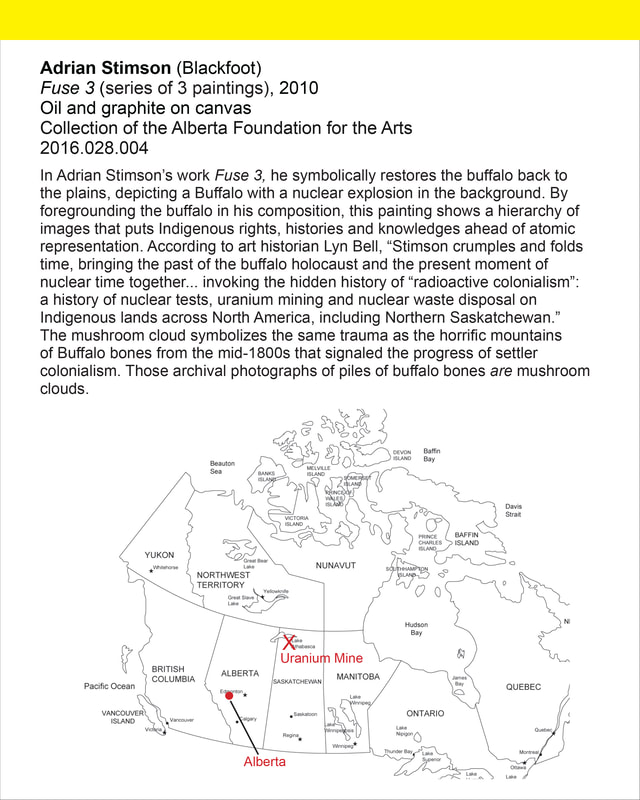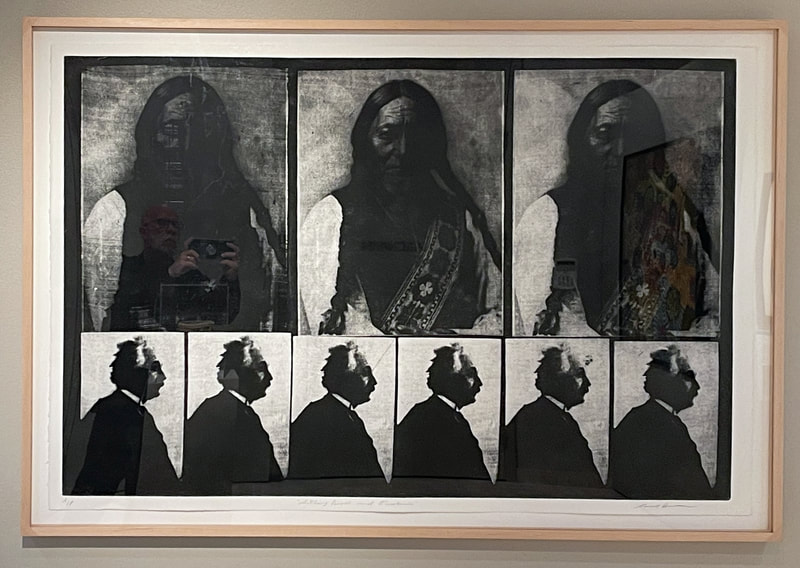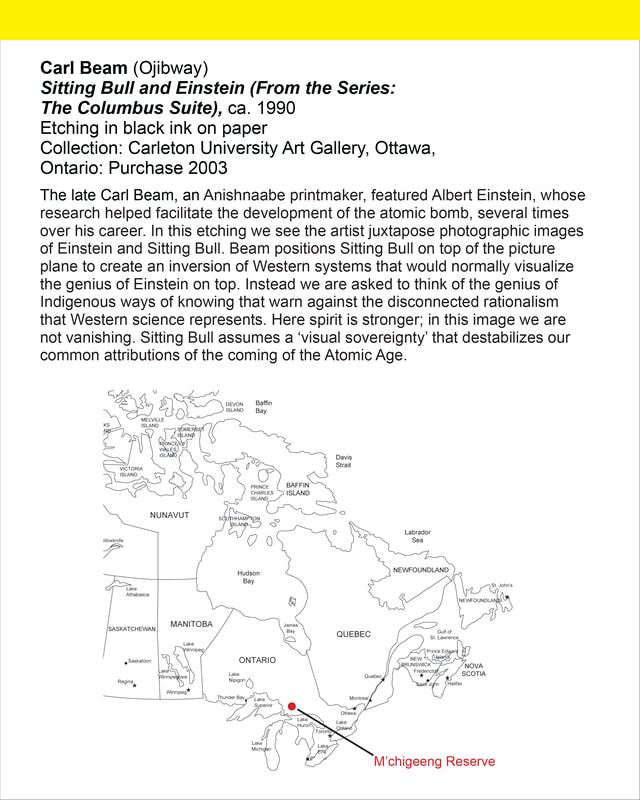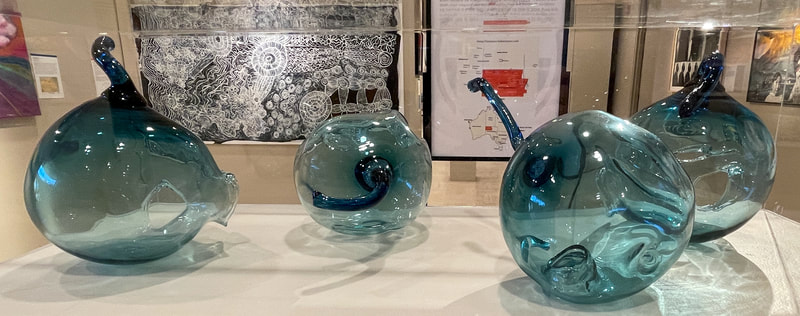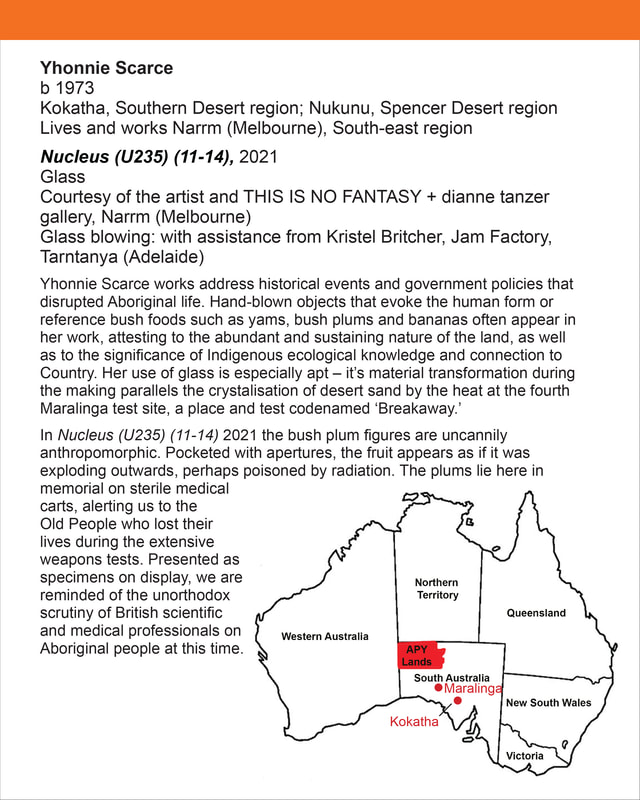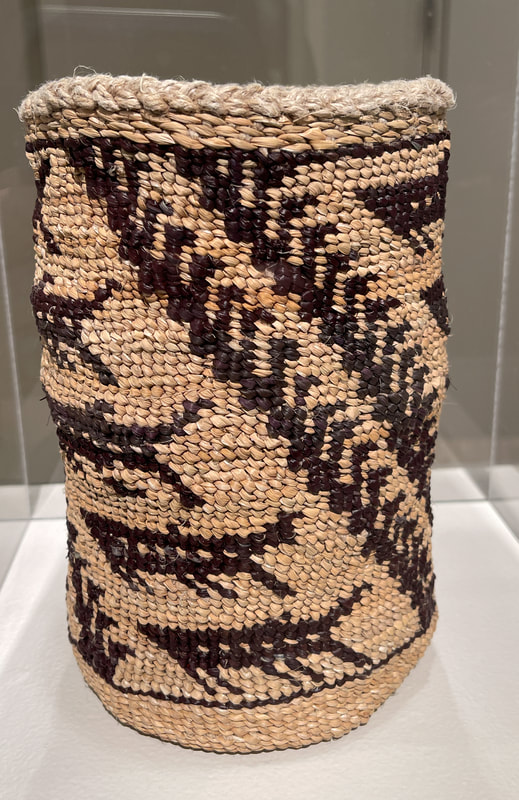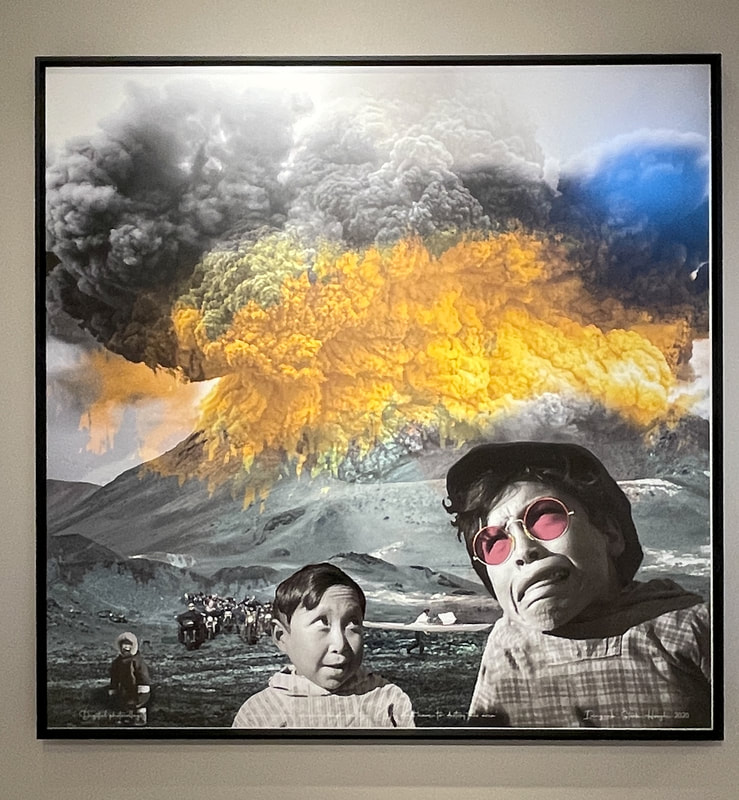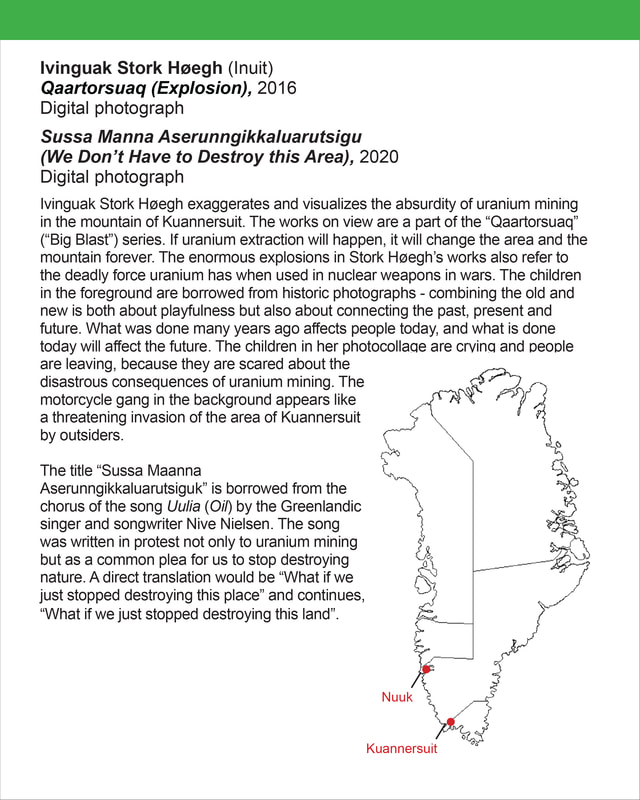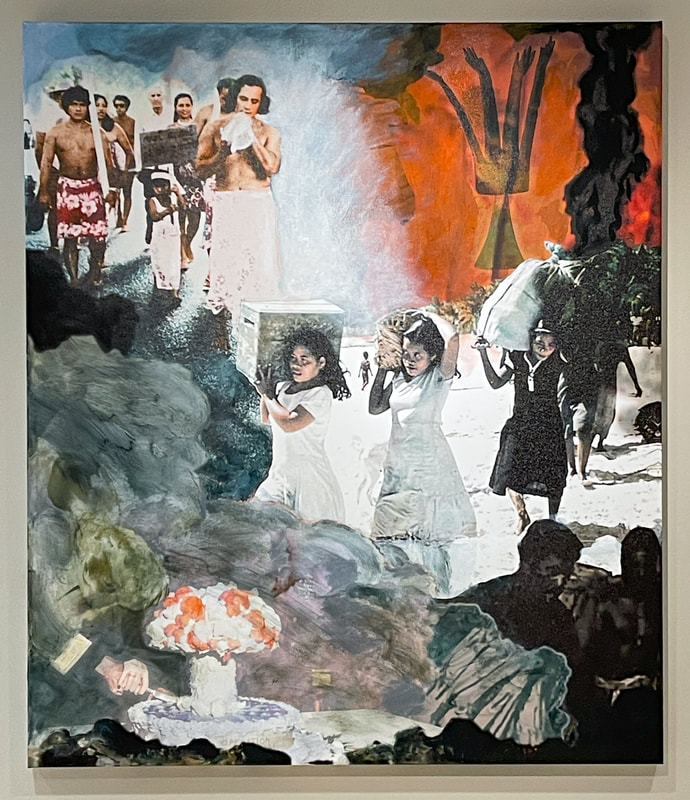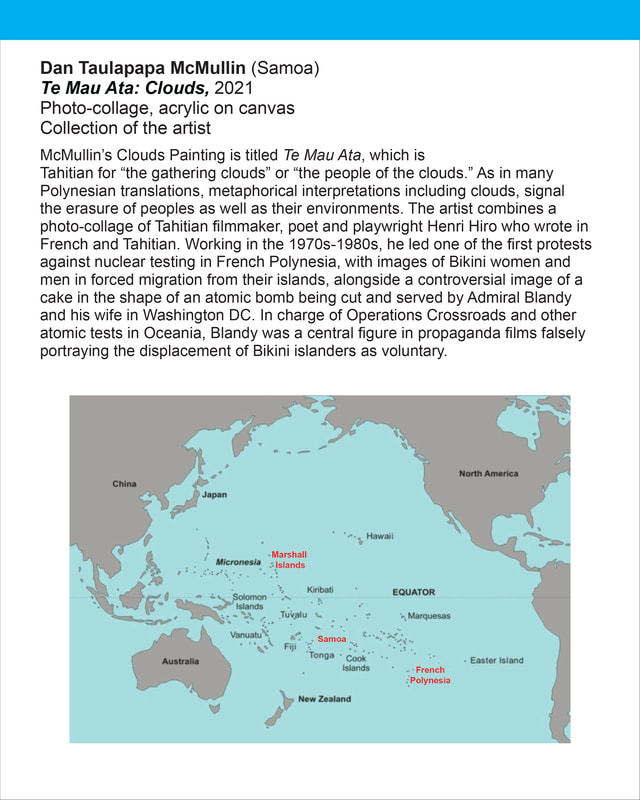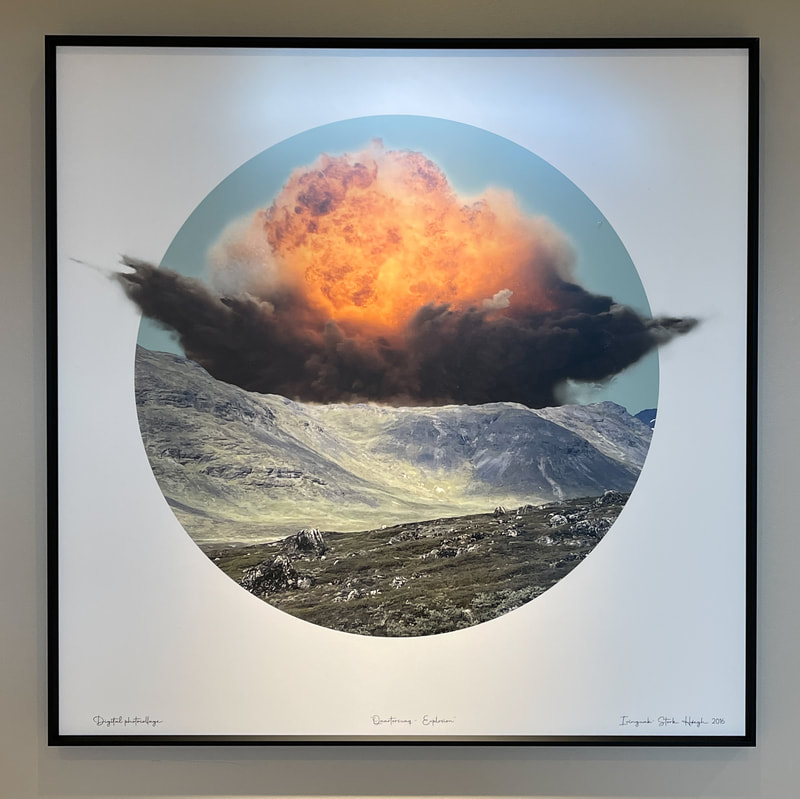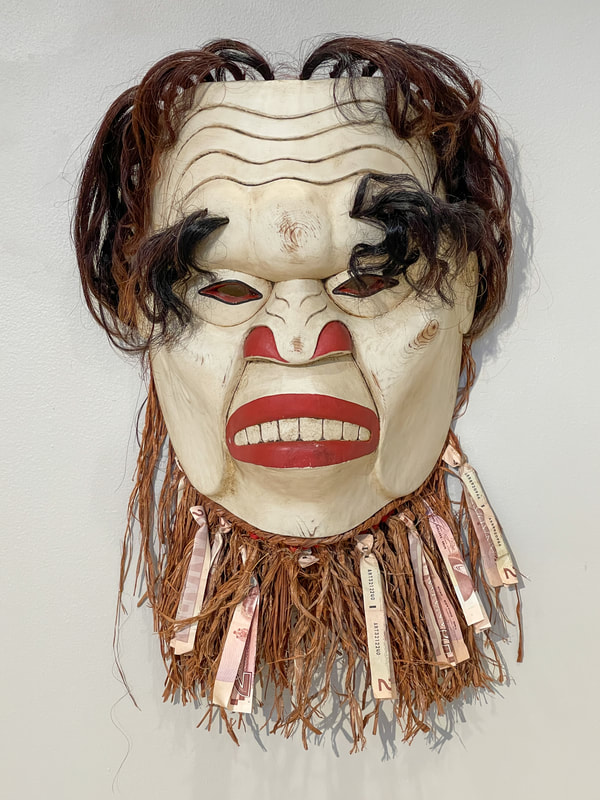The Exhibition
Click on the labels on left of artwork to read more.
Exhibition Films
The exhibition contains several short films. Click on each below to view.
|
Arkhticós Doloros, 2019, Jessie Kleemann (Inuit)
Film Length: 12 minutes Jessie Kleemann’s performance, “Arkhticós Doloros”, took place on June 20, 2019 in the ablation zone of the Greenland Ice Sheet, at an area known as the Blue Lake. The performance was part of a workshop entitled, “At the Moraine: Envisioning the Concerns of Ice,” organized by Amanda Boetzkes and Jeff Diamanti. “Arkhticós Doloros” can be understood in connection with her broader performance and installation-based practice which deals with Greenlandic identity, colonial history, myth and the Arctic environment. The title of the performance, “Arkhticós Doloros”, is a phrase borrowed from Barry Lopez’s bestseller “Arctic Dreams”. In the performance, Kleemann engages with this pivotal site where unprecedented glacier melt is taking place. With her characteristic shift into an alternative state of mind—a state that she relates to dreaming-- Kleemann embodies and enacts the ambivalence, dilemmas, and material struggles at stake in witnessing this formidable place. The elements seem to have a will of their own here; Kleemann enters into a dance where the power shifts continuously from her body to the wind and ice. Jessie Kleemann (b.1959) is a contemporary Greenlandic artist whose work deals with Greenlandic identity, colonial history, myth and the Arctic environment. Her performance work has been linked to the work of Pia Arke and Niviaq Korneliussen. |
History Project: A Marshallese Nuclear Story, 2020, Kathy Jetnil-Kijiner, Illustrator: Munro Te Whata
Film Length: 4 minutes, 37 seconds This graphic adaptation has resulted from a rich creative collaboration between Marshallese poet Kathy Jetñil-Kijiner, Maori-Niuean artist Munro Te Whata, Edinburgh University academic Michelle Keown, and Island Research and Education Initiative (iREi), a non-profit publisher based in Pohnpei. The project began when Michelle came across a YouTube recording of Kathy performing her poem ‘History Project’ during the ‘Poetry Parnassus’ event held in London during the 2012 Olympics. The event was intended to bring together one representative poet from each of the 204 nations competing in the Olympics, and Kathy represented her country, the Republic of the Marshall Islands (RMI), by drawing the world’s attention to the legacy of US nuclear testing in the islands. Following the US atomic bomb attacks on Hiroshima and Nagasaki in 1945, which resulted in Japan’s surrender as one of the ‘Axis’ powers against which Britain, the US and other allies fought during the Second World War, the US took over many of Japan’s former Micronesian territories, including the Marshall Islands, as a ‘Strategic Trust Territory’ mandated by the United Nations. This allowed the US to use the Marshall Islands as a site for multiple nuclear tests during the period known as the Cold War, when the US competed with other large nations such as Russia (formerly known as the USSR) in the race for global dominance in the field of nuclear weapons technology. Kathy Jetñil-Kijiner is a Marshall Islander poet and spoken word artist whose works empower Marshallese youth to seek solutions to climate change and other environmental impacts threatening their home island. |
|
Breath of Wind, 2017, Anna Tsouhlarakis (Navajo | Creek | Greek)
Film Length: 3 minutes, 18 seconds Anna Tsouhlarakis’ film Breath of Wind explores issues surrounding abandoned uranium mines on the Navajo Nation and the poisoning of the land at the hands of extractionist corporate interests. Tsouhlarakis presents haunting depictions of Indigenous land that has been left toxic and violated—affecting past, present, and future generations. “While not much visible evidence is left of the Church Rock uranium disaster, the catastrophe resurfaces every time the wind blows and sends radioactive particles to the homes and corrals of local residents.” The 1979 the explosion of a dam near Church Rock, New Mexico sent uranium mining waste through the water system which had devastating consequences for the local population. The cancer rates are the highest where radioactive dust is blown in the wind. [Excerpt from the publication “EXTRACTION: Art on the Edge of the Abyss”] |
Anointed, 2017, Written and performed by Kathy Jetnil-Kijiner (Marshallese-Majol)
Directed by Daniel Lin Film Length: 6 minutes, 8 seconds Acclaimed poet and activist, Kathy Jetnil-Kijiner, explores the nuclear testing legacy of the Marshall Islands through the legends and stories of Runit Island. Anointed was directed by Daniel Lin as part of the Pacific Storytellers Cooperative Project of PREL. Kathy Jetñil-Kijiner is a Marshall Islander poet and spoken word artist whose works empower Marshallese youth to seek solutions to climate change and other environmental impacts threatening their home island. Daniel Lin is the Director of the Pacific Storytellers Cooperative at PREL. He has spent the last decade traveling and listening to stories of people all across the Pacific Islands region. |
|
Clouds, 2021, Dan Taulapapa McMullin (Samoa)
Film Length: 6 minutes Clouds is a video poem installation, a graphic narrative of the history of nuclear testing and global warming in the contemporary context, in American Micronesia and French Polynesia, told in a storytelling format and includes elements of photography, moving image, animation, photo-collage, painting, image and text, indigenous expression and appropriation. Also depicted in the video are portraits of three Tahitian indigenous activists: novelist Chantal Spitz, politician Oscar Temaru, and trans cultural organizer Mareva Leu. |
You Can’t See It, and You Can’t Smell It Either - 誰にも見えない、匂いもない, 2011
Producer: OKI (Ainu) Lyrics: Rankin Taxi Video: Takahiro Morita FESN Music: Dub Ainu Band Music Video Length: 4 minutes, 27 seconds Japan reggae artists MC Rankin and Dub Ainu Band deliver a cautionary message about radioactive material through this song and music video “You Can’t See It, and You Can’t Smell It Either.” |
|
Hula for Pere, 2017, Alexander Lee (Tahiti, French Polynesia)
Video Length: 5 minutes (Approx) Performed by Kumu Marques Marzan, the performance includes a chant invoking Polynesian gods to travel from Tahiti to Hawaii, calling for Pere, goddess of fire, to be present in the exhibition space. |
Taiko and Champagne!, 2017, Alexander Lee (Tahiti, French Polynesia)
Video Length: 20:10 minutes Taiko, performed by Kenny Endo and Eric Chang simulate the rumble of a volcanic eruption culminating into nuclear fireworks; and Champagne! a serving of Veuve Clicquot, performed by Spencer Agoston. Taken as a whole, the performance draws a sonic and visual image of the geological formation of the Pacific islands, where the volcanic eruption culminates into a nuclear explosion. The serving of champagne, with its characteristic bottle opening pop, by a maître d’hotel dressed with a mound of hei on his head, furthers that image and reflects on the colonial reality of Polynesia. Hula for Pere, Taiko, and Champagne! are three performances that took place at the premiere of Alexander Lee’s installation Te Atua Vahine mana ra O Pere (the Great Goddess Pere - L’ Aube où les Fauves viennent se désaltérer), at the Honolulu Biennale of 2017 This series of performances and its ritualistic aspects, are an inherent part of the installation and social and cultural aspect of Te Atua Vahine mana ra O Pere, currently featured in the exhibition, Exposure: Native Art and Political Ecology. |
Fa’ahei, 2021, Alexander Lee (Tahiti, French Polynesia)
Film Length: 5:10 minutes
Fa’ahei is the documentation of a performance that took place at the inauguration of Alexander Lee’s sculpture ’Ōfa’i, Pierre Lune (Moon Stone) in Meuse, France, in 2021.
It depicts a march between the village of Lahaymeix to the site of the stone sculpture. Once there, a ceremony of fa’a hei (crowning) takes place, adorning the sculpture with a hei of wild boar teeth, gleaned from the surrounding forests.A local choir from the adjacent villages chant a marquesan song, an ode to rain, written especially for the inauguration by the choir of Hapatoni, island of Tahuata, Marquesas archipelago.
By way of transposition, Lee draws a link between the nuclear fallouts of France’s nuclear experiments in the Pacific, and its intended nuclear waste stocking in the Meuse region. The artist further developped his reflections on water and visual motifs in the mural titled Sky-Waters, currently featured in the exhibition, Exposure: Native Art and Political Ecology.
Film Length: 5:10 minutes
Fa’ahei is the documentation of a performance that took place at the inauguration of Alexander Lee’s sculpture ’Ōfa’i, Pierre Lune (Moon Stone) in Meuse, France, in 2021.
It depicts a march between the village of Lahaymeix to the site of the stone sculpture. Once there, a ceremony of fa’a hei (crowning) takes place, adorning the sculpture with a hei of wild boar teeth, gleaned from the surrounding forests.A local choir from the adjacent villages chant a marquesan song, an ode to rain, written especially for the inauguration by the choir of Hapatoni, island of Tahuata, Marquesas archipelago.
By way of transposition, Lee draws a link between the nuclear fallouts of France’s nuclear experiments in the Pacific, and its intended nuclear waste stocking in the Meuse region. The artist further developped his reflections on water and visual motifs in the mural titled Sky-Waters, currently featured in the exhibition, Exposure: Native Art and Political Ecology.

